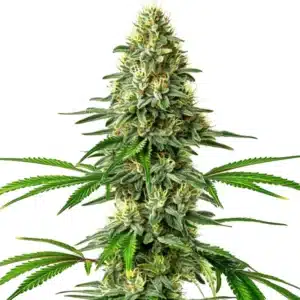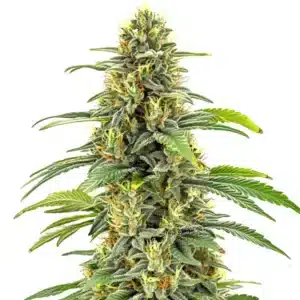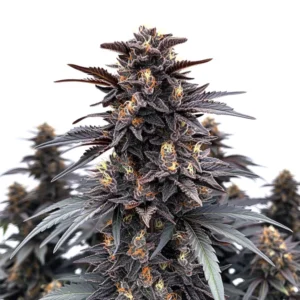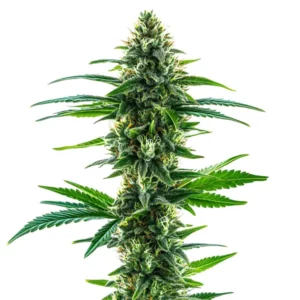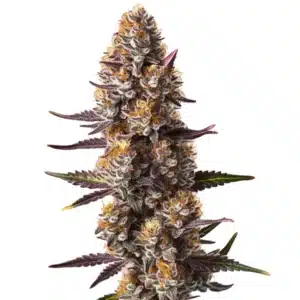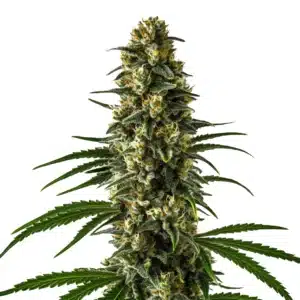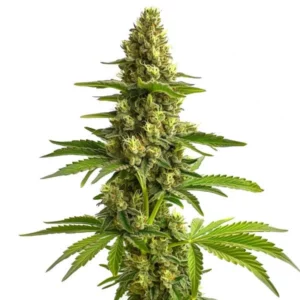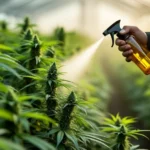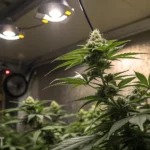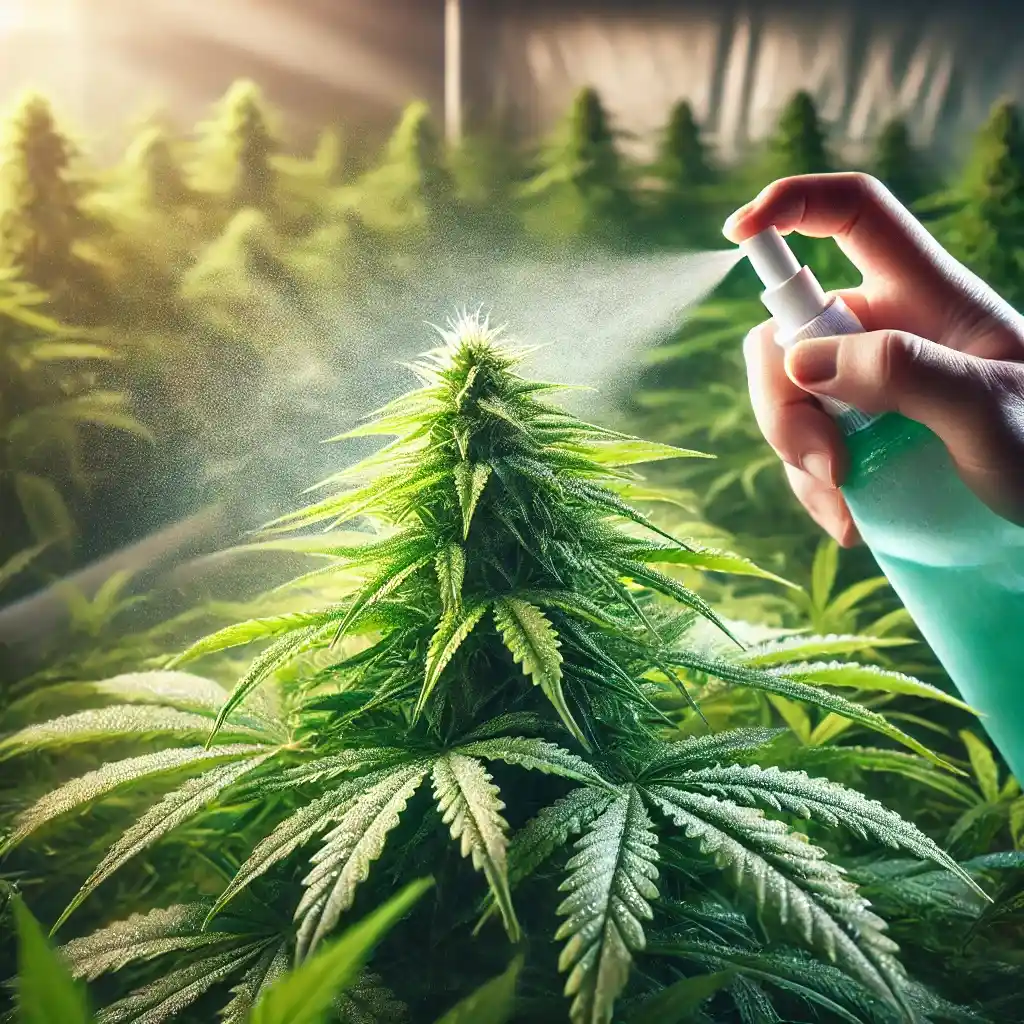
Foliar Feeding Cannabis: Unlocking Superior Growth and Potency
The Basics of Foliar Feeding Cannabis
What is Foliar Feeding?
Foliar feeding cannabis involves applying nutrients directly to the leaves, bypassing the roots. This method allows cannabis plants to absorb nutrients quickly through their stomata, the tiny openings on the surface of the leaves. Foliar feeding serves as a powerful tool for growers, offering a way to address nutrient deficiencies rapidly and boost plant health. By applying a nutrient-rich solution directly to the leaves, the plant absorbs essential elements more efficiently, ensuring quicker recovery and optimal growth.
Foliar feeding is particularly useful in situations where soil conditions might limit nutrient uptake, such as in compacted or nutrient-deficient soils. This method also allows for targeted nutrient application, addressing specific deficiencies without altering the entire nutrient regimen of the soil. Moreover, foliar feeding can be a lifesaver in hydroponic systems, where nutrient imbalances can quickly affect plant health. By offering a direct route to supply nutrients, foliar feeding ensures that plants get what they need exactly when they need it, enhancing overall growth and vitality.
Recommended Strains
Santa Muerte
|
|
THC | 18% - 20% (Medium) |
|
|
Type | Feminized |
|
|
Yield | High |
|
|
Phenotype | 20% Indica / 80% Sativa |
Santa Muerte FBV
|
|
THC | 17% - 20% (Medium) |
|
|
Type | Fast Flowering |
|
|
Yield | Medium |
|
|
Phenotype | 40% Indica / 60% Sativa |
How Foliar Feeding Benefits Cannabis Plants
Foliar feeding provides cannabis plants with immediate access to essential nutrients, allowing for rapid correction of deficiencies and a noticeable boost in plant vitality. Unlike soil feeding, where nutrients must travel through the root system, foliar feeding offers a direct line to the plant’s most critical growth centers. This method accelerates nutrient uptake and improves the overall health and resilience of the plant. For growers aiming to maximize yield and potency, incorporating foliar feeding into their cultivation routine can make a significant difference.
The immediate effect of foliar feeding can be particularly beneficial during stressful periods, such as after transplanting or during a pest outbreak. When plants are under stress, their ability to uptake nutrients through the roots can be compromised. Foliar feeding bypasses this issue, allowing growers to quickly support their plants with essential nutrients. This rapid intervention can mean the difference between a thriving crop and one that struggles to recover, especially during the critical stages of growth and development.
Additionally, foliar feeding can enhance the plant’s resistance to diseases and pests. By ensuring that the plant has access to all the necessary nutrients, especially those involved in immune responses, such as zinc and manganese, foliar feeding strengthens the plant’s natural defenses. Healthier plants are less likely to succumb to infections or infestations, reducing the need for chemical interventions. This not only supports organic growing practices but also contributes to producing cleaner, higher-quality cannabis.
When to Use Foliar Feeding in the Growth Cycle
Timing is crucial when foliar feeding cannabis. This technique is most effective during the vegetative stage when the plant is actively growing and has a higher demand for nutrients. During this phase, foliar feeding promotes lush, vigorous growth, preparing the plant for a robust flowering stage. While foliar feeding can be beneficial during early flowering, discontinue it later in the cycle to prevent potential issues with mold and mildew on the buds. Understanding the optimal timing for foliar feeding ensures that your plants receive the maximum benefit without adverse effects.
During the early stages of flowering, a carefully timed foliar feed can provide a much-needed boost as the plant transitions from vegetative growth. At this point, the plant begins to focus on producing flowers, which requires a shift in nutrient demands. A foliar application with a balanced nutrient mix, including phosphorous and potassium, can help support this transition. However, it’s important to stop foliar feeding as buds start to form, as excess moisture on the flowers can create conditions conducive to mold, which can devastate a crop.
Promos & Deals
Advantages of Foliar Feeding for Cannabis
Quick Nutrient Absorption
One of the primary advantages of foliar feeding cannabis is the speed at which nutrients are absorbed. When nutrients are applied directly to the leaves, they bypass the slower process of root uptake, leading to immediate results. This rapid absorption can be particularly beneficial when addressing nutrient deficiencies or when plants require a quick boost of energy during critical growth phases. For growers looking to maintain a high level of control over their plants’ nutrient intake, foliar feeding offers an unparalleled advantage.
Rapid nutrient uptake is especially important during times of environmental stress, such as heat waves or drought conditions, where the plant’s root system may be compromised. By applying nutrients directly to the leaves, growers can ensure that their plants receive the necessary support to survive and thrive under challenging conditions. This immediate response not only saves time but can also prevent potential losses, making foliar feeding a crucial tool in the grower’s arsenal.
Another benefit of quick nutrient absorption through foliar feeding is the ability to tailor nutrient applications to specific growth stages. For instance, a high-nitrogen foliar feed during the vegetative stage can promote lush, green growth, while a phosphorus-rich feed during early flowering can enhance bud development. This precise control over nutrient delivery allows growers to optimize plant health and maximize yield potential at every stage of growth.
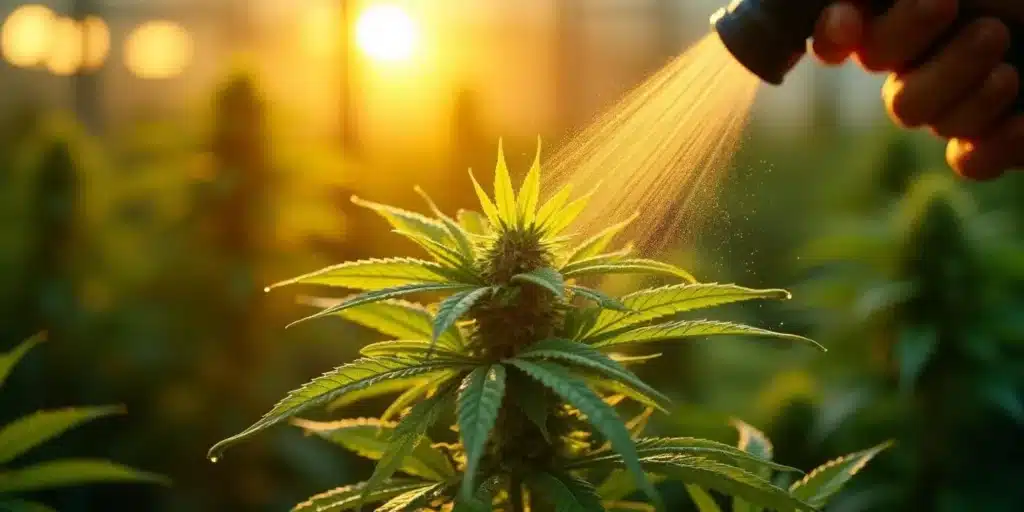
Correcting Nutrient Deficiencies
Nutrient deficiencies can severely impact cannabis growth, leading to stunted plants and reduced yields. Foliar feeding provides an effective solution by allowing growers to correct deficiencies quickly. For instance, if a plant shows signs of a nitrogen or magnesium deficiency, applying a foliar spray with the necessary nutrients can reverse the symptoms within days. This method is especially useful in hydroponic setups or in cases where soil conditions prevent efficient nutrient uptake. By addressing deficiencies early with foliar feeding, growers can prevent long-term damage and ensure their plants thrive.
Foliar feeding is particularly advantageous for correcting micronutrient deficiencies, such as those involving zinc, iron, or manganese. These nutrients are required in small amounts but are crucial for various physiological processes within the plant. A deficiency in any of these can lead to symptoms like chlorosis (yellowing of the leaves) or stunted growth. Foliar feeding allows for a direct and efficient delivery of these micronutrients, quickly alleviating symptoms and restoring plant health.
Plant Health and Growth
Foliar feeding not only corrects deficiencies but also enhances overall plant health and growth. By providing a balanced mix of nutrients directly to the leaves, growers can ensure that their plants receive the optimal amount of essential elements, leading to stronger stems, more vibrant leaves, and ultimately, higher yields. Additionally, foliar feeding helps plants recover from environmental stressors, such as heat or pest damage, by supplying them with the nutrients needed to repair and strengthen their tissues. This holistic approach to plant nutrition leads to more resilient and productive cannabis crops.
Enhanced plant health through foliar feeding can also contribute to improved resistance to pests and diseases. Well-nourished plants are better equipped to fend off pests like aphids and spider mites, as well as fungal infections such as powdery mildew. By ensuring that plants have all the necessary nutrients, foliar feeding helps them maintain their natural defenses, reducing the need for chemical pesticides and fungicides. This not only supports the health of the plants but also promotes a cleaner, more sustainable growing environment.
Furthermore, foliar feeding can boost the production of secondary metabolites, such as cannabinoids and terpenes, which are responsible for the potency, flavor, and aroma of cannabis. By optimizing nutrient levels during critical growth stages, foliar feeding can enhance the quality and quantity of these compounds, leading to a more potent and flavorful final product. This makes foliar feeding an essential technique for growers focused on producing high-quality cannabis.
Best Practices for Foliar Feeding Cannabis
Choosing the Right Nutrients for Foliar Feeding
Selecting the right nutrients for foliar feeding is crucial for achieving the best results. While many standard nutrients can be used in foliar applications, it’s essential to choose products specifically designed for foliar feeding. These solutions are typically more concentrated and formulated for quick absorption through the leaves. When selecting a foliar feed, consider the specific needs of your cannabis plants at their current growth stage. For instance, a high-nitrogen solution might be ideal during the vegetative stage, while a potassium-rich blend could be more suitable during early flowering. Always ensure that the nutrients are fully dissolved in water to prevent clogging the plant’s stomata.
Another key factor is the frequency of application. While foliar feeding can be highly effective, it should not be overused. Over-fertilizing through foliar feeding can lead to nutrient burn, where the leaves develop brown spots or edges due to excessive nutrient concentration. To avoid this, start with a diluted solution and gradually increase the concentration if needed, always observing how your plants respond. This careful approach helps ensure that your plants receive the nutrients they need without causing harm.
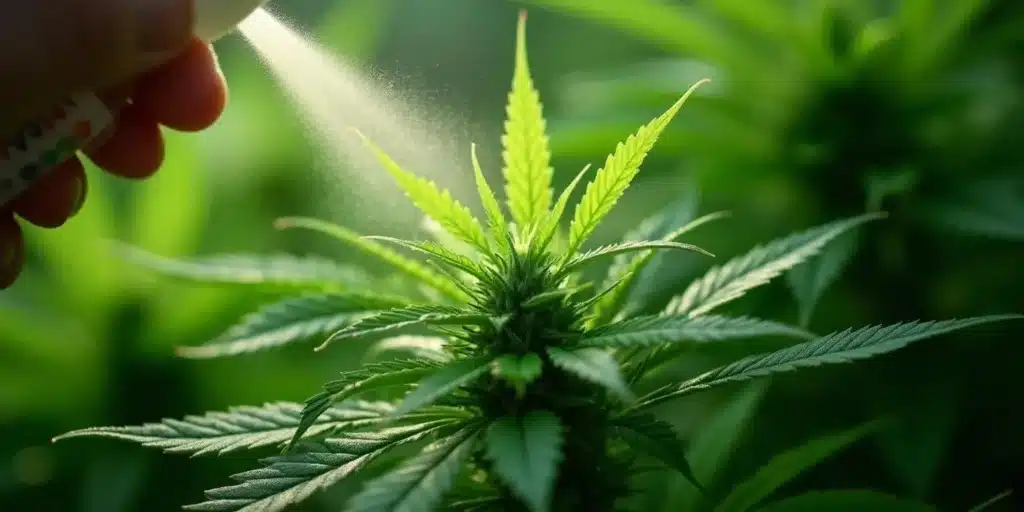
Optimal Timing for Foliar Feeding
The timing of foliar feeding plays a significant role in its effectiveness. The best time to apply foliar sprays is early in the morning or late in the evening when temperatures are cooler, and the stomata on the leaves are open. This timing allows for maximum nutrient absorption and reduces the risk of leaf burn caused by sunlight interacting with the nutrient solution. Additionally, foliar feeding during these times helps prevent the solution from evaporating too quickly, ensuring that the plants have enough time to absorb the nutrients fully.
Morning foliar feeding is often preferred because it aligns with the plant’s natural metabolic rhythms. During the early hours, plants are more actively absorbing moisture and nutrients, making this an ideal time for foliar applications. However, if morning feeding is not possible, evening applications can be just as effective, provided the plants have time to dry before nightfall to avoid fungal issues.
It’s also important to consider the plant’s current growth stage when determining the frequency and timing of foliar feeding. During the vegetative stage, when the plant is rapidly growing, foliar feeding can be applied more frequently. However, as the plant enters the flowering stage, foliar feeding should be reduced or stopped to prevent moisture from settling on the buds, which can lead to mold. By tailoring the timing and frequency of foliar feeding to your plants’ growth cycle, you can maximize the benefits while minimizing risks.
Proper Application Techniques
Applying foliar feed correctly is essential to avoid damaging the plants and to ensure that the nutrients are evenly distributed. Use a fine mist sprayer to apply the solution, making sure to cover both the tops and undersides of the leaves where the stomata are located. Avoid drenching the plant, as excess moisture can lead to fungal issues, especially in dense canopies. It’s also important to monitor the plants after foliar feeding to ensure they are responding well to the treatment. Adjust the concentration or frequency of application as needed to prevent nutrient burn or other issues.
Proper sprayer maintenance is also crucial for effective foliar feeding. Ensure that the sprayer is clean and free from residues that could clog the nozzle or contaminate the nutrient solution. After each use, rinse the sprayer thoroughly with clean water to prevent any buildup that could affect future applications. Consistently using a well-maintained sprayer ensures even application and prevents issues that could arise from uneven nutrient distribution.
Creating a Foliar Feed Solution for Cannabis
Mixing Nutrients for Maximum Effectiveness
Creating an effective foliar feed solution involves mixing the right nutrients in the correct proportions. Start by selecting a water-soluble fertilizer that matches your plants’ current needs. Carefully follow the manufacturer’s instructions for dilution, as over-concentration can harm the leaves. It’s also beneficial to add a wetting agent, such as a few drops of organic dish soap, to the solution. This helps the spray spread evenly across the leaf surface and improves nutrient absorption. If you’re addressing a specific deficiency, consider adding a targeted supplement, such as a calcium-magnesium blend, to the mix.
When mixing nutrients, it’s crucial to understand the specific needs of your cannabis plants at each growth stage. For example, during the vegetative stage, a high-nitrogen formula will support leafy growth, while during flowering, a solution richer in phosphorus and potassium will promote bud development. Tailoring your foliar feed solution to these needs ensures that your plants receive the precise nutrients required for optimal growth.
The Role of pH in Foliar Feeding
Maintaining the correct pH level in your foliar feed solution is critical for nutrient uptake. Cannabis plants prefer a slightly acidic pH when absorbing nutrients through their leaves, typically around 5.5 to 6.5. Use a pH meter to test your solution before applying it to your plants. If the pH is too high or too low, adjust it with pH up or pH down products until it falls within the ideal range. Ensuring the right pH balance will maximize the effectiveness of the foliar feed and prevent nutrient lockout, which can occur if the pH is not properly regulated.
pH management in foliar feeding is often overlooked but is vital for ensuring that the nutrients are available for the plant to absorb. If the pH is outside the ideal range, certain nutrients may become less soluble, leading to deficiencies even if they are present in the solution. Regularly testing and adjusting the pH of your foliar feed solution ensures that your plants can absorb all the nutrients provided.
DIY vs. Commercial Foliar Feeding Solutions
Growers can choose between creating their own foliar feeding solutions or purchasing commercial products. DIY solutions offer flexibility and cost savings, allowing you to tailor the nutrient mix to your plants’ specific needs. However, they require a good knowledge of plant nutrition and careful measurement to avoid mistakes. On the other hand, commercial foliar feeds are convenient and formulated for optimal absorption, making them a reliable choice for those who prefer a ready-made solution. Whether you opt for DIY or commercial products, the key is to choose a solution that meets the nutritional demands of your cannabis plants at each growth stage.
DIY foliar feeding solutions can be customized to address specific issues, such as nutrient deficiencies or stress recovery. This flexibility allows growers to experiment with different combinations and concentrations to find the most effective formula for their plants. However, creating your own solution requires a solid knowledge of plant physiology and nutrient interactions to avoid over-fertilization or nutrient imbalances.
Commercial solutions, while more expensive, provide a level of convenience and consistency that many growers appreciate. These products are specifically designed for foliar application, often containing additional ingredients like surfactants or chelating agents that improve nutrient absorption. For growers who prefer a more straightforward approach, commercial foliar feeds can offer peace of mind, knowing that the product is formulated to meet the needs of cannabis plants at various stages of growth. Ultimately, whether using DIY or commercial solutions, the goal is to provide your plants with the nutrients they need for healthy, vigorous growth.
Troubleshooting Foliar Feeding Issues
Issues to Avoid
While foliar feeding is a powerful tool, it’s essential to avoid common pitfalls that can hinder its effectiveness. One of the most common issues is applying the foliar spray during the hottest part of the day, which can cause the leaves to burn as the solution evaporates quickly. Another issue is overfeeding, where too frequent or too concentrated applications lead to nutrient toxicity, visible as leaf burn or discoloration. To avoid these problems, always dilute your foliar feed properly and follow a consistent feeding schedule, adjusting based on your plants’ responses.
It’s also important to avoid using hard water or water with high levels of chlorine when mixing your foliar feed solution. These elements can interfere with nutrient absorption and may cause additional stress to the plants. If your tap water is not suitable, consider using filtered or distilled water to ensure the purity of the solution. Additionally, always clean your spraying equipment thoroughly to avoid cross-contamination and ensure that previous residues don’t affect the current feeding.
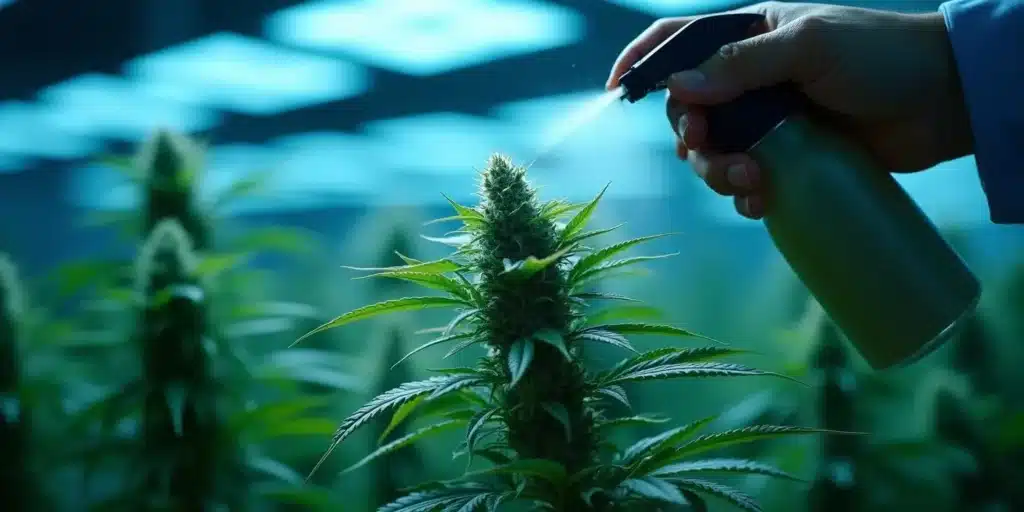
Signs of Overfeeding or Underfeeding
Recognizing the signs of overfeeding or underfeeding through foliar feeding can help you fine-tune your approach. Overfeeding often manifests as leaf burn, where the leaf tips turn brown and crispy. In severe cases, entire leaves may curl or drop off. On the other hand, underfeeding leaves the plants looking pale and stunted, with slow growth and yellowing leaves indicating a lack of essential nutrients. Regularly inspecting your plants for these signs allows you to adjust the concentration and frequency of your foliar feed to maintain optimal plant health.
In addition to physical symptoms, monitoring the plant’s growth rate can also indicate nutrient imbalances. For instance, if your plants are growing slower than expected or if new leaves are unusually small, it might be a sign of underfeeding. Conversely, rapid growth accompanied by dark green leaves and brittle textures could suggest overfeeding. By keeping a close eye on these signs and responding quickly, you can avoid long-term damage and keep your cannabis plants thriving.
Dealing with Leaf Burn and Other Problems
If you notice leaf burn or other issues after foliar feeding, it’s crucial to take immediate action to prevent further damage. First, stop foliar feeding temporarily to allow the plants to recover. Flush the plants with clean, pH-balanced water to remove any excess nutrients from the leaves. Ensure that your next foliar feeding is properly diluted and consider applying it during the cooler parts of the day to reduce the risk of burn. If fungal issues arise due to excess moisture, improve air circulation and consider using a fungicide to protect your plants.
Another key step in addressing foliar feeding issues is to reassess the overall health of your grow environment. Check factors such as humidity levels, temperature, and ventilation, as these can all impact how well your plants respond to foliar feeding. If necessary, adjust your environmental controls to create more favorable conditions. Additionally, consider whether your nutrient solution is balanced correctly, as an imbalance can exacerbate problems like leaf burn. Taking a holistic approach to troubleshooting will help you identify and correct the root causes of any issues.
Foliar Feeding vs. Soil Feeding: A Comparison
Differences in Nutrient Delivery
Foliar feeding and soil feeding serve different purposes in cannabis cultivation, with each method offering unique benefits. Foliar feeding delivers nutrients directly to the leaves, allowing for rapid absorption and quick correction of deficiencies. This method is particularly effective during the vegetative stage when plants need a fast boost. Soil feeding, on the other hand, provides a slow, steady supply of nutrients to the roots, supporting long-term growth and development. While foliar feeding offers immediate results, soil feeding is essential for building a strong root system and sustaining plant health over time.
Another key difference lies in the types of nutrients each method can deliver effectively. Foliar feeding is excellent for supplying micronutrients and addressing acute deficiencies, while soil feeding is better suited for delivering macronutrients like nitrogen, phosphorus, and potassium, which are required in larger quantities. Additionally, soil feeding contributes to the development of beneficial soil microbes, which play a crucial role in nutrient cycling and overall plant health. Combining both methods allows growers to capitalize on the strengths of each, ensuring comprehensive nutrient coverage for their plants.
When to Choose Foliar Feeding Over Soil Feeding
Choosing between foliar and soil feeding depends on the specific needs of your cannabis plants. Foliar feeding is ideal for addressing nutrient deficiencies quickly or providing a boost during periods of rapid growth. It’s also useful in hydroponic setups or when soil conditions are less than ideal. However, soil feeding remains the backbone of cannabis nutrition, supplying the roots with a consistent source of essential elements. For best results, many growers use a combination of both methods, with foliar feeding as a supplement to their regular soil feeding routine.
Foliar feeding is particularly advantageous in scenarios where plants are showing signs of nutrient lockout, which can occur when the soil’s pH is off, or there is a buildup of salts. In such cases, the roots cannot absorb nutrients efficiently, and foliar feeding provides a temporary solution by bypassing the roots altogether. However, once the root problem is resolved, resuming regular soil feeding ensures that plants continue to receive the nutrients they need for sustained growth. Realizing when to switch between these feeding methods can help maintain plant health and prevent common issues associated with nutrient deficiencies.
Balancing Foliar and Soil Feeding for Optimal Growth
Achieving the right balance between foliar and soil feeding can lead to optimal cannabis growth. By combining the rapid action of foliar feeding with the steady support of soil feeding, growers can ensure that their plants receive the nutrients they need at every stage of development. For instance, during the vegetative stage, foliar feeding can help kickstart growth, while soil feeding builds a strong foundation. As the plants transition to flowering, reducing foliar feeding and focusing on soil nutrition can help maximize yield and potency. Monitoring your plants closely and adjusting your feeding strategy as needed is key to achieving the best results.
To effectively balance both methods, it’s crucial to develop a feeding schedule that aligns with your plants’ growth stages and environmental conditions. For example, a weekly foliar feeding routine during the vegetative phase can complement bi-weekly soil feedings, ensuring that the plants have a constant supply of nutrients. As you move into the flowering phase, gradually taper off foliar feeding while increasing the focus on soil feeding, particularly with nutrients that support bud development. This strategic approach helps create a robust, resilient plant capable of producing high yields and quality flowers.
Advanced Techniques in Foliar Feeding
Using Foliar Feeding to Boost Resin Production
Advanced growers can use foliar feeding techniques to boost resin production, enhancing the potency and quality of their cannabis. Certain nutrients, such as potassium and phosphorus, play a crucial role in resin development during the flowering stage. By applying a targeted foliar feed rich in these elements, growers can encourage the plant to produce more resin, resulting in trichome-rich buds with higher concentrations of cannabinoids and terpenes. Timing is critical, as applying these nutrients too early or too late can reduce effectiveness, so precise application is necessary.
In addition to potassium and phosphorus, other elements like sulfur and magnesium can also contribute to increased resin production. Sulfur is particularly important for the synthesis of terpenes, the aromatic compounds that define the flavor and smell of cannabis. Incorporating these nutrients into your foliar feed during the mid-flowering stage can enhance the terpene profile of your plants, leading to a more aromatic and potent final product. However, it’s crucial to monitor the plants closely for any signs of nutrient burn, as these elements can be potent in foliar form.
Incorporating Beneficial Microbes in Foliar Sprays
Incorporating beneficial microbes into your foliar sprays can further enhance plant health and growth. These microbes, such as mycorrhizae and beneficial bacteria, can help improve nutrient uptake, boost immunity against diseases, and enhance overall plant vitality. When added to foliar sprays, these microbes colonize the leaf surface, providing an extra layer of protection and facilitating better nutrient absorption. This technique is particularly useful in organic growing systems where maintaining a healthy microbial balance is key to successful cultivation.
In addition to their role in nutrient absorption, beneficial microbes can also help plants manage environmental stress. For instance, certain strains of bacteria can induce systemic resistance in plants, making them more resilient to pests and pathogens. By including these microbes in your foliar feed, you can create a healthier, more robust plant that is better equipped to withstand challenges. Furthermore, these microbes can help break down organic foliar feeds, making the nutrients more readily available to the plants. This symbiotic relationship enhances the overall effectiveness of foliar feeding.
Foliar Feeding with Organic Nutrients
For growers who prefer an organic approach, foliar feeding with organic nutrients offers a way to nourish cannabis plants while maintaining natural cultivation practices. Organic foliar feeds typically include ingredients like seaweed extract, fish emulsion, and compost tea, all of which are rich in micronutrients and growth hormones. These natural solutions not only provide essential nutrients but also help stimulate plant growth and resilience. When using organic foliar feeds, it’s important to ensure that the ingredients are properly diluted and applied evenly to avoid any negative effects on the plants.
Organic foliar feeding also supports the health of beneficial microbes on the leaf surface and in the soil. Ingredients like seaweed extract contain natural growth hormones such as cytokinins, which promote cell division and enhance overall plant vigor. Compost teas, rich in beneficial bacteria and fungi, can also contribute to a thriving microbial environment, both on the leaves and in the soil. By integrating organic foliar feeding into your cultivation practices, you not only nourish your plants but also contribute to a healthier, more balanced ecosystem in your grow space.
Safety Considerations for Foliar Feeding Cannabis
Avoiding Contaminants in Foliar Sprays
Ensuring the purity of your foliar sprays is crucial for the health of your cannabis plants. Contaminants in the water or nutrients used in foliar feeding can lead to problems such as leaf burn, fungal infections, or even contamination of the final product. Always use filtered or distilled water to mix your foliar solutions, and choose high-quality, contaminant-free nutrients. Regularly clean your spray equipment to prevent the buildup of residues that could contaminate future applications. By maintaining strict hygiene practices, you can ensure that your foliar feeding efforts contribute to healthy, high-quality cannabis.
In addition to using clean water, it’s important to avoid using any foliar sprays that contain harmful chemicals or heavy metals, which can accumulate in the plant tissues and affect the safety of the final product. For this reason, organic and natural nutrient sources are often preferred, especially in systems where the end product is intended for medicinal use. Additionally, testing your water source for contaminants regularly can help you catch any potential issues before they affect your crop. This attention to detail ensures that your cannabis plants remain healthy and free from harmful substances throughout the growing process.
Protecting Plants from Pests and Disease
While foliar feeding can boost plant health, it also requires careful management to avoid attracting pests or encouraging disease. Excess moisture on the leaves can create a favorable environment for mold and mildew, especially in humid conditions. To minimize these risks, always apply foliar sprays during periods of low humidity, and ensure good air circulation in your grow space. Additionally, consider adding natural pest deterrents, such as neem oil, to your foliar sprays to protect your plants from common cannabis pests like spider mites and aphids.
To further protect your plants, monitor the humidity and temperature levels in your grow environment closely, particularly after applying foliar sprays. If the conditions are too humid, the moisture from the spray may not evaporate quickly enough, leading to the development of mold. In addition, maintaining a regular cleaning schedule for your grow space can help prevent the buildup of fungal spores and pest eggs, which can be exacerbated by the increased moisture from foliar feeding. Taking these precautions will help you leverage the benefits of foliar feeding without inadvertently introducing new problems.
Environmental Factors to Consider
The effectiveness of foliar feeding depends on several environmental factors, including temperature, humidity, and light. Applying foliar sprays in high heat can lead to rapid evaporation and leaf burn, while excessive humidity can promote fungal growth. Aim to apply foliar feeds during cooler parts of the day, such as early morning or late evening, when temperatures are lower and humidity is moderate. Also, avoid applying foliar sprays under direct intense light, as this can cause the leaves to scorch. By carefully considering these environmental factors, you can maximize the benefits of foliar feeding while minimizing potential risks.
It’s also important to adjust your foliar feeding strategy based on seasonal changes or shifts in your grow environment. For instance, during the winter months, when indoor humidity levels might be lower due to heating, you might need to mist your plants more frequently to ensure they stay hydrated. Conversely, in summer or in tropical climates, you may need to reduce the frequency or concentration of foliar feeds to avoid over-saturating the leaves. By staying attuned to these environmental variables, you can fine-tune your foliar feeding approach to best support your plants’ needs at any given time.
Foliar Feeding During Different Growth Stages
Foliar Feeding in the Vegetative Stage
During the vegetative stage, cannabis plants focus on growing leaves and stems. Foliar feeding can significantly enhance this growth. Apply foliar sprays rich in nitrogen to boost leaf development and overall plant vigor. This stage is ideal for foliar feeding because the plants can quickly absorb the nutrients, leading to lush, healthy growth. Ensure that the sprays are applied in the early morning or late evening to avoid leaf burn.
In addition to nitrogen, foliar sprays during the vegetative stage can include other essential nutrients like calcium and magnesium, which support cell structure and photosynthesis. These elements are crucial for building a strong plant that can support heavy buds during the flowering stage. By regularly applying a balanced foliar feed during vegetative growth, you can help your plants develop a sturdy framework, setting the stage for a successful flowering phase. Monitoring the plants’ response and adjusting the nutrient mix as needed will ensure that your cannabis plants remain healthy and vigorous throughout this critical growth period.
Foliar Feeding in the Flowering Stage
In the early flowering stage, foliar feeding can help enhance bud development. Use nutrient sprays that focus on potassium and phosphorus. These elements support flower formation and increase resin production. However, foliar feeding should be reduced as the buds develop to avoid moisture-related issues like mold. Stop foliar feeding altogether in the late flowering stage to protect the buds’ quality and potency.
During the transition from vegetative to flowering, foliar feeds can also include micronutrients like boron and zinc, which are essential for reproductive growth. These nutrients help in the development of healthy flowers and the production of high-quality resin. However, as the flowers begin to mature, it’s crucial to shift focus to soil feeding and reduce the reliance on foliar sprays. This ensures that the buds remain dry and free from any contaminants that could affect their quality. By carefully timing your foliar feeding practices during the flowering stage, you can maximize yield and potency while minimizing the risk of mold or mildew.
FAQs About Foliar Feeding Cannabis
Is Foliar Feeding Safe for All Cannabis Strains?
Yes, foliar feeding is generally safe for all cannabis strains. However, always monitor each plant’s response closely. Some strains may be more sensitive to foliar applications.
How Often Should I Foliar Feed My Cannabis Plants?
Foliar feeding is typically done once or twice a week. Adjust frequency based on your plant’s specific needs. Avoid overfeeding to prevent nutrient burn.
Can I Foliar Feed During Flowering?
Foliar feeding can be done in early flowering, but it’s best to stop later. This helps prevent mold and mildew on buds. Avoid spraying directly on flowers.
What Time of Day Is Best for Foliar Feeding?
The best time for foliar feeding is early morning or late evening. This timing reduces the risk of leaf burn. It also maximizes nutrient absorption.
Can I Combine Foliar Feeding with Soil Feeding?
Yes, combining foliar feeding with soil feeding can lead to optimal results. Use foliar feeding as a supplement. This provides quick nutrient absorption while soil feeding sustains long-term growth.
What Should I Do If I See Leaf Burn?
If you see leaf burn, stop foliar feeding temporarily. Flush plants with pH-balanced water. Resume feeding with a diluted solution to prevent further damage.
Is Organic Foliar Feeding Effective?
Yes, organic foliar feeding is effective and popular among growers. It nourishes plants naturally and supports sustainable cultivation practices. Organic solutions can be just as potent as synthetic ones.


